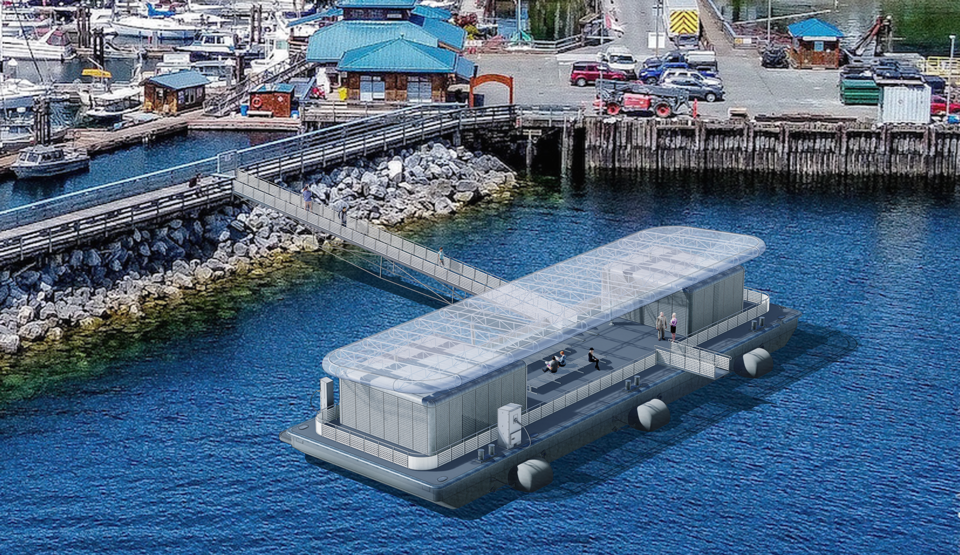A proposed electric passenger ferry service connecting Gibsons, Bowen Island and Vancouver may arrive on the Sunshine Coast before BC Ferries increases its service to the Coast. The electric service is “on track with our plans to launch in 2027,” according to Greenline Ferries’ chief executive officer Callum Campbell.
On May 5, Greenline released its “charge barge” design. It is a configuration for a floating charging spot and terminal plan for Gibsons Harbour, with an eye to reusing the design for the other docking locations.
Details for Gibsons site
The charge barge design addresses grid and dock capacity, as well as public charging access. Those were identified as the major challenges for all-electric marine transportation infrastructure in Gibsons, according to a company statement.
Using an onboard battery bank that charges from the grid over time, then transfers power to vessels during docking periods, the study confirmed a connection to the town’s existing electrical infrastructure can support up to four round-trip sailings per day without an upgrade.
“Because it is not possible to dedicate docking space at Gibsons for the Greenline ferry that wouldn’t come at the expense of some other user, the only real solution is to expand the facility with additional docking space," Greenline detailed. "The charge barge, which is a self-contained floating terminal, expands docking capacity without encroaching on others."
The first barge site is unconfirmed, with a location just outside the Gibsons Landing breakwater proposed. Estimates list the structure at 32.1 metres in length, 10.4 metres in width and 3.05 metres in depth.
Now that the basic design is done, Greenline is working on a detailed service proposal, said Campbell in an email. More "stakeholder engagement, environmental screening, technical planning and regulatory scoping" is to come. Once the Gibsons site is selected, Greenline expects to start formal permitting later this year and charge barge construction next year.
Next steps and other locations
As for paying for it all, “The charge barge for Gibsons is one element of Greenline's ferry service, which has an overall capital cost of $60 million," the CEO stated. "We are actively in conversation with partners to secure this funding. The confirmed capital incentives include the Clean Technology Investment Tax Credit covering 30% of capital infrastructure, and a BC Hydro Demand Response Incentive for battery storage."
Noting the design was a “modular platform," Campbell indicated “the core technology and utility functions will be consistent across sites, but each barge will be adapted to local conditions — whether that's battery size, mooring configuration, or visual integration into the harbour setting."
The design includes charging infrastructure for private vessels in addition to the company’s ships. That makes the plan “a creative solution to add electric charging capacity to existing small craft harbours,” spokesperson for project partner 3GA Marine Ltd. Daniel McIntyre states on Greenline’s website.
The charge barge was designed in partnership with BC Hydro, local governments and others.



